Cities That Talk Back
2012-2013
Project Lead
Sarah Williams
Danil Nagy
Research Assistants
Liqun Chen
Alexis Jay Sablone
Exhibition Design
Sarah Williams
Danil Nagy
Support from
URBANUS
Special thanks
Luc Anselin who co-taught the “Cities That Talk Back” class
Project Lead
Sarah Williams
Danil Nagy
Research Assistants
Liqun Chen
Alexis Jay Sablone
Exhibition Design
Sarah Williams
Danil Nagy
Support from
URBANUS
Special thanks
Luc Anselin who co-taught the “Cities That Talk Back” class
Overview
Many cities are represented through a filter of governmental data. While some local govern- ments have made conscious efforts to make this data more publicly available, data access remains a challenge in many parts of the world. In countries such as China, data is often hard to obtain, or is aggregated into larger spatial representations which obscure the detail of the city and its inhabitants. The internet has revolutionized how urban data is gathered and generated. Public opinion pages, online real estate sites, and similar Web 2.0 based websites generate a tremendous amount of data at a much finer level of detail than traditional sources. Similarly, social media sites have created the ability to describe the modern city through the voice of its people and create an alternative publicly generated data set.
Cities That Talk Back was a class and exhibition for the Shenzhen Biennale to explore the possibil- ity of using social media data to describe the Chinese city. The class was co-taught by Sarah Williams and Luc Anselin at MIT’s Department of Urban Stud- ies and Planning using Weibo data (Chinese Twitter) to look at housing issues in Shenzhen. Danil Nagy and Sarah Williams developed an exhibition of the students work.
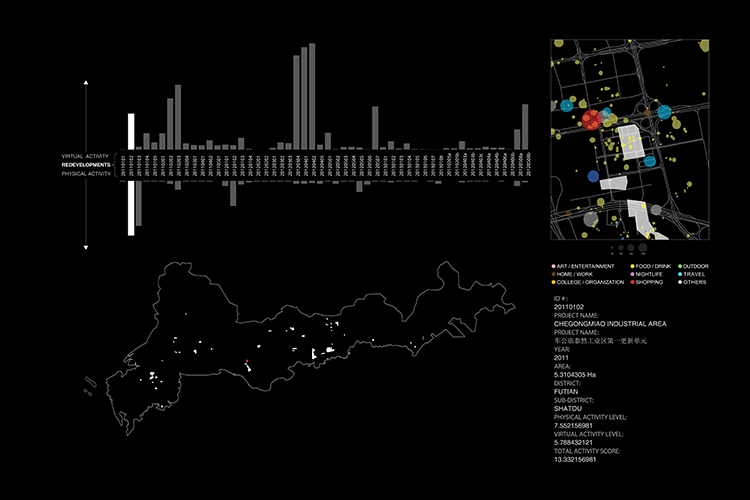 Crowd Up, by Liqun Chen, Qianqian Zhang, Alexis Jay Sablone. This project explores a dynamic tool to catalog urban redevelopment projects, by which the local residents can better understand their home,
Crowd Up, by Liqun Chen, Qianqian Zhang, Alexis Jay Sablone. This project explores a dynamic tool to catalog urban redevelopment projects, by which the local residents can better understand their home,and planners can use effectively engage the communities virtually and physically.
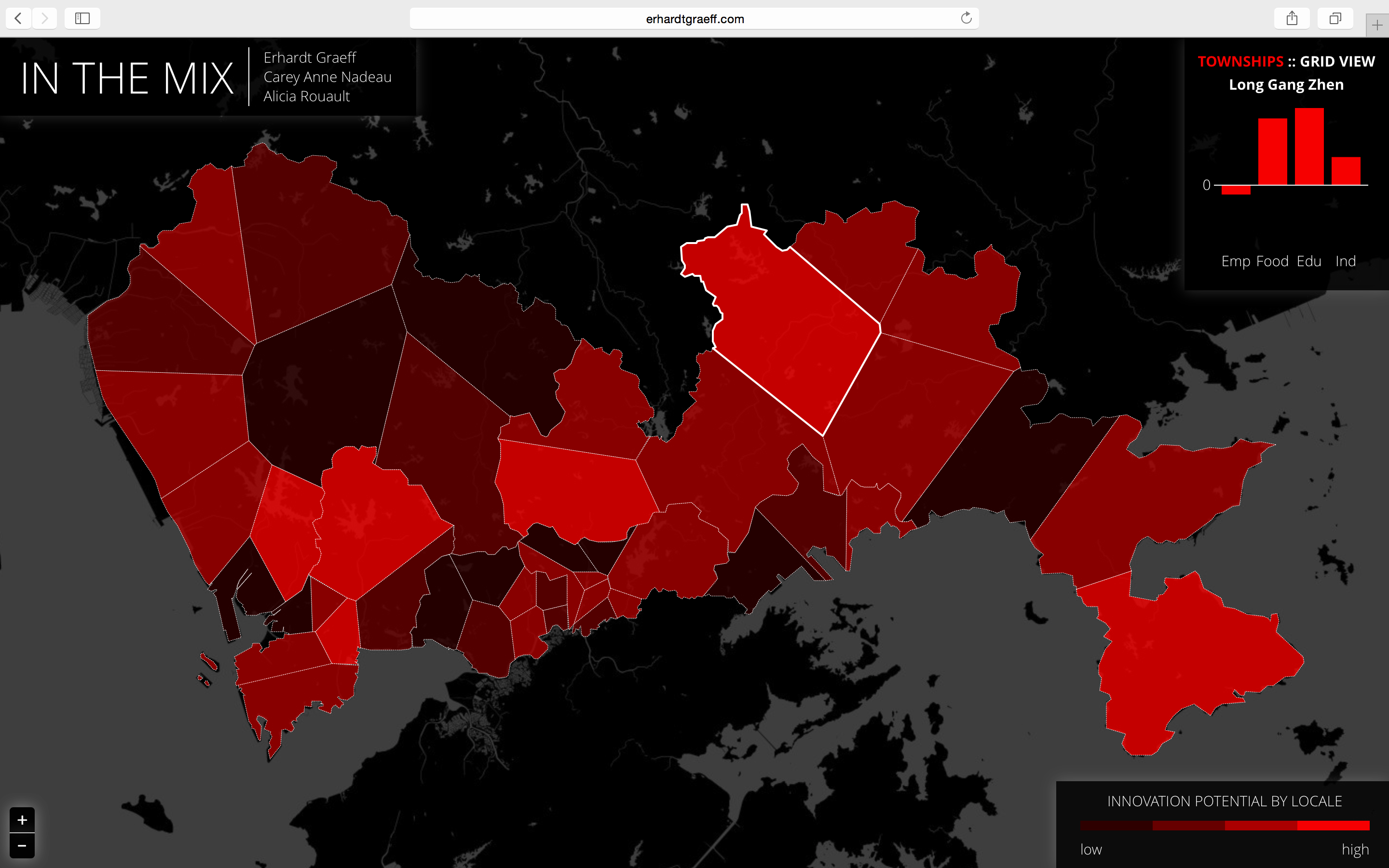 In The Mix, by Erhardt Graeff, Carey Anne Nadeau, Alicia Rouault.
We visualize data from the popular social media platform Weibo, along with 2000 census data on four indicators representing potential innovation in Shenzhen, China. The premise of this index is that young, hip Weibo users can be a proxy for the location of an emergent “creative class.”
In The Mix, by Erhardt Graeff, Carey Anne Nadeau, Alicia Rouault.
We visualize data from the popular social media platform Weibo, along with 2000 census data on four indicators representing potential innovation in Shenzhen, China. The premise of this index is that young, hip Weibo users can be a proxy for the location of an emergent “creative class.”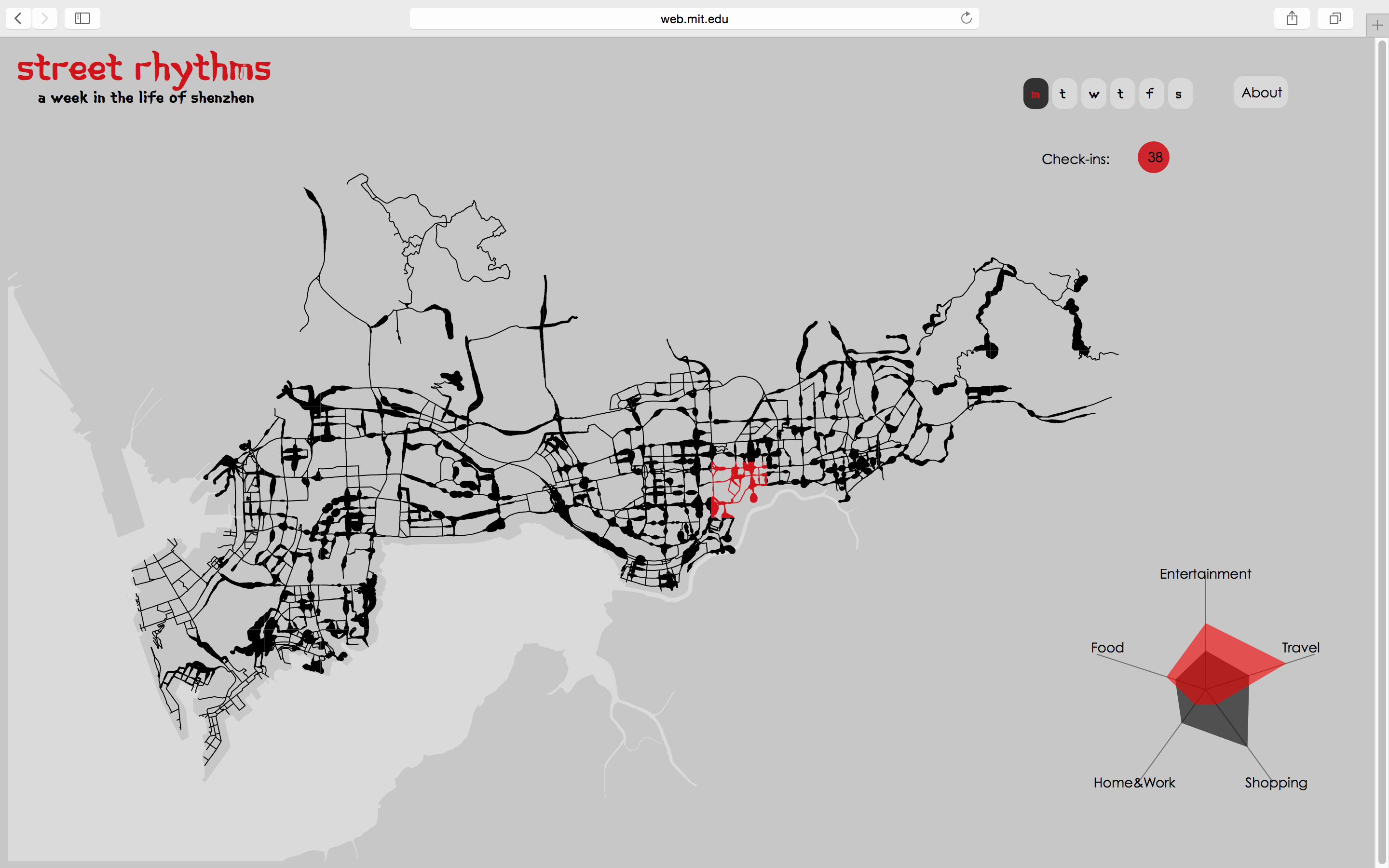 Street Rhythms, by Robert Manduca, Mia Petkova, George Reuter. Shared “check-ins” reveal how we choose to use streets. By linking Sina Weibo check-in information to the road network, we learn the character of our streets, and how they vary by neighborhood and over time.
Street Rhythms, by Robert Manduca, Mia Petkova, George Reuter. Shared “check-ins” reveal how we choose to use streets. By linking Sina Weibo check-in information to the road network, we learn the character of our streets, and how they vary by neighborhood and over time.
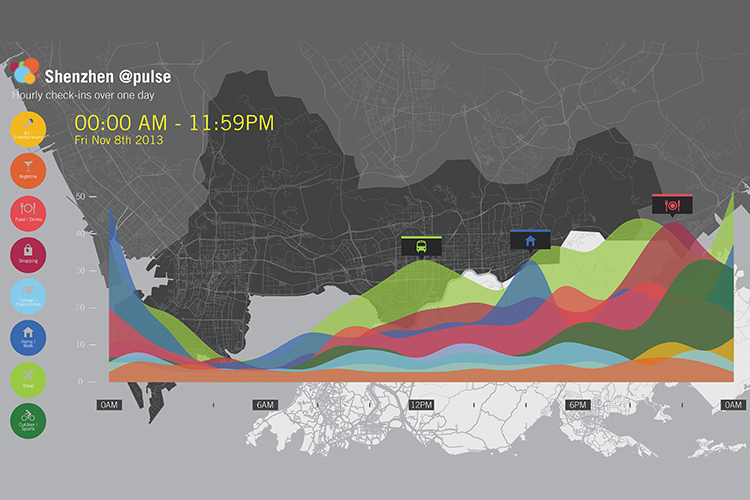 Shenzhen@Pulse, byShan He, Liu Liu, Roberto Ponce Lopez. This project presents an exploration of urban mobility and human activity in downtown Shenzhen through the visualization of social media data from Weibo. The visualization displays the travel behavior for those users that most frequently checked-in from different locations, showing their displacement across downtown Shenzhen.
Shenzhen@Pulse, byShan He, Liu Liu, Roberto Ponce Lopez. This project presents an exploration of urban mobility and human activity in downtown Shenzhen through the visualization of social media data from Weibo. The visualization displays the travel behavior for those users that most frequently checked-in from different locations, showing their displacement across downtown Shenzhen. HIVEMIND, by Xin Fu, Jean Qin Gu, Fan Guo. Using social media, we seek to tap into the village- dwellers’ Hiveminds to ultimately understand their relationship to the dynamics of the city.
HIVEMIND, by Xin Fu, Jean Qin Gu, Fan Guo. Using social media, we seek to tap into the village- dwellers’ Hiveminds to ultimately understand their relationship to the dynamics of the city.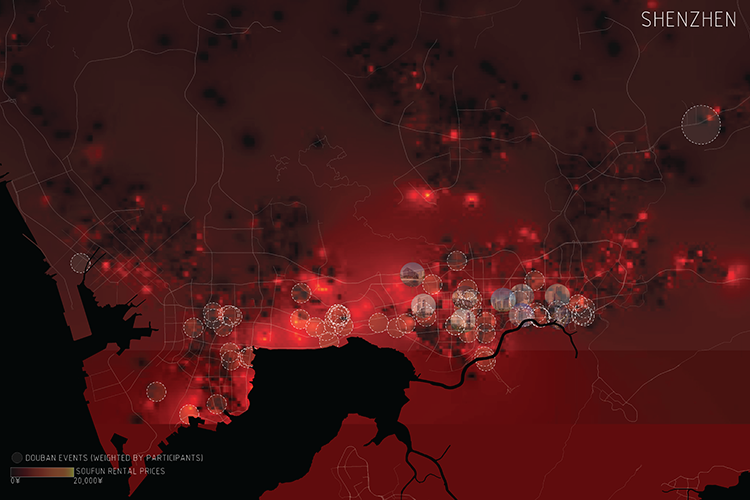 Development Culture, by Daniela Andrea Jacome, Alexander Ehlers Rosenthal, Yimeng Sun. Through rental price data extracted from Soufun. com and event information taken from Douban. com, the influence of mixed-use developments can be seen within each city, as well the overall definition of the urban fabric within the PRD.
Development Culture, by Daniela Andrea Jacome, Alexander Ehlers Rosenthal, Yimeng Sun. Through rental price data extracted from Soufun. com and event information taken from Douban. com, the influence of mixed-use developments can be seen within each city, as well the overall definition of the urban fabric within the PRD.Shenzhen Biennale Exhibition
Cities That Talk Back exhibition at the Shenzhen Biennale 2013 features student work from a class with the same name co-taught by Sarah Williams and Luc Anselin. The class asked students to visualize data downloaded from Weibo, the Chinese version of Twitter.

Hearing Voices
Danil Nagy and Sarah Williams developed sounds sensor which played Weibo messages as patrons walked under the device. When the sensor was triggered, a light went off. As patrons moved through the exhibition, they both heard the voices of those on who posted on Weibo and saw map representations. Two video animations developed to explain the data scrapping process was projected on a screens inserted into boxes in the middle of the exhibition space.


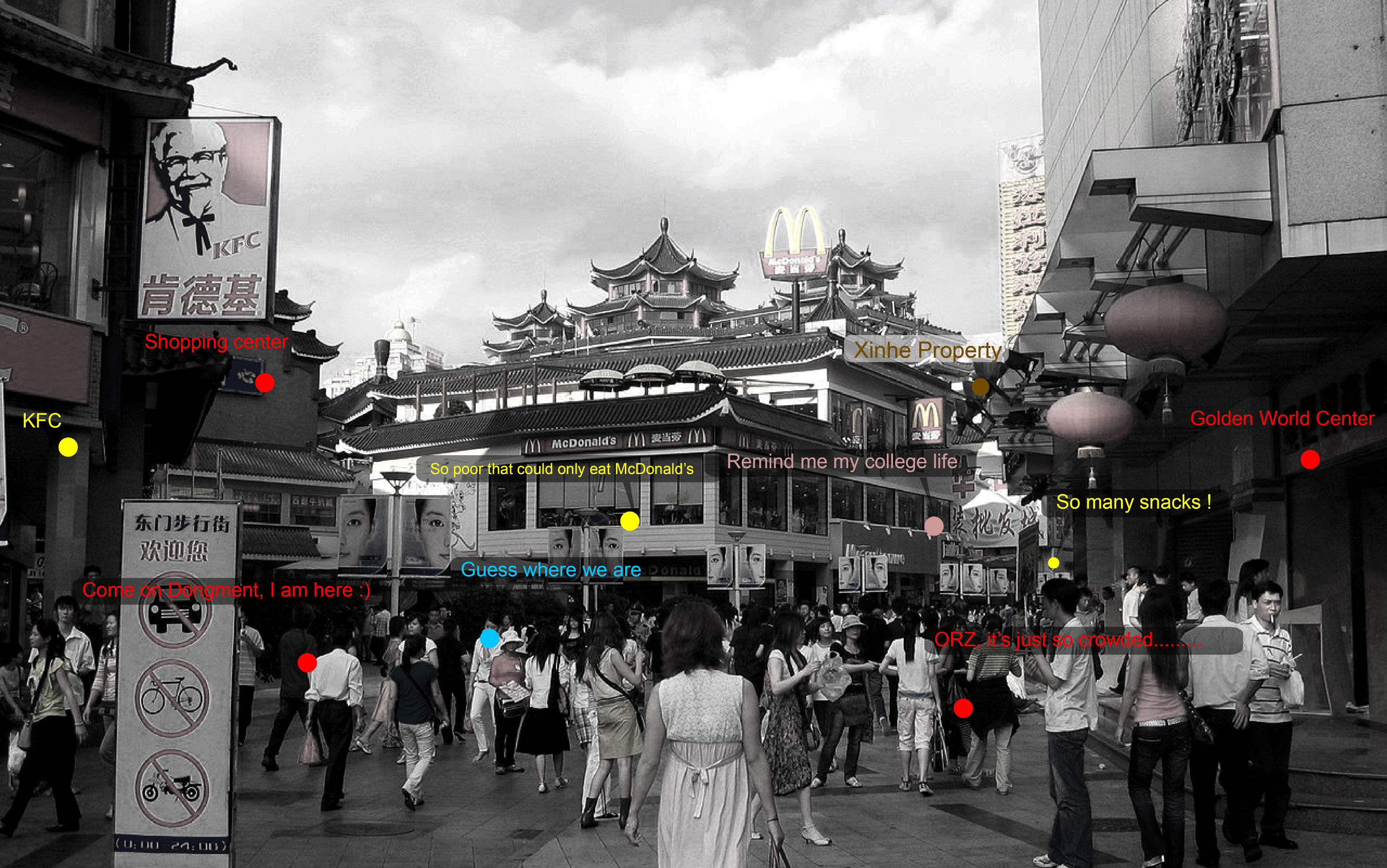
Press
“Cities That Talk Back” exhibition, Shenzhen Biennale 2013
“Cities That Talk Back” exhibition, Shenzhen Biennale 2013